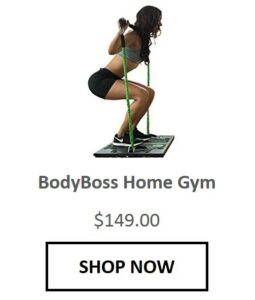
16 Mar How HIIT Can Take Your Performance To The Next Level, And Faster
There are always ways, and there are always better and faster ways. If you are looking to dramatically improve cardiovascular and muscular performance, faster, there is nowhere else to look: HIIT training. HIIT stands for Hight Intensity Interval Training. This is the type of training that can get you to the next level.
HIIT is a form of training that uses short periods of intense activity alternated with less intense recovery periods between them. This way your work harder, in a shorter period. HIIT provides a robust foundation for cardiovascular improvement, fat reduction, and muscular improvement, among other benefits.
“The best project you will ever work on is you.”
How HIIT is done
Depending on the type of training, HIIT is typically done in less than 15-20 minutes. The type of activity can vary (running, exercise bike, or any other), but the common practice is using from 20 up to 60 seconds of continuous intense activity (at 90% up to 150% VO2max) followed by 15-30 seconds of rest, then intense activity again, for a total of 3-6 sets, depending on the regime, or the combination of regimes.
A good routine for runners (1x or 2x week) can include a set of 200 mts fast runs with 30 seconds rest period between them. Repeat 5 times. This can be done at 80%-90% VO2max. After 3 weeks of work, you will feel the effects of HIIT training.
You can read more about the well known Gibala, Tabata, Zuniga, Vollaard, and Peter Coe regimes here
*If you are not an active runner, and your physical activity is low, make sure to consult your physician before starting any HIIT training.
How HIIT impacts your body
The high intensity training amplifies the effects of what a regular training has on your body:
- Cardiovascular benefits. Every muscle strike during HIIT training will create stronger inflow and outflow of blood from and to the heart, developing a healthier heart and circulatory system.
- Metabolic effects. New research has revealed that HIIT increases glucose metabolism in muscles as well as insulin sensitivity in type 2 diabetes shortly after two weeks of HIIT training
- Fat oxidation. HIIT increases the capacity of your body to burn fat, faster. The usage rate of carbs and fat for energy creation during HIIT is much higher than regular training
- Higher oxygen consumption. Some studies have determined that HIIT can improve your muscles’ ability to use and consume oxygen
- Muscle strength. HIIT requires higher strikes from the muscles in every movement. This will create additional blood flow in the muscle allowing it to work more efficiently and get better results, faster
- Brain effects. Some studies have revealed cognitive benefits of HIIT training
With HIIT you need less time that regular exercise routines. If you don’t have the luxury of time to spend one hour at the gym, or running, HIIT can be a great option which can only take up to 20 minutes
“HIIT cardio burns 6x the fat in half the time compared to steady-state cardio.”
Don’t forget
- If you are not an active runner, or your physical activity is low, consult your physician before starting any HIIT routine
- Don’t skip the warmup. HIIT will demand shorter but stronger muscle strikes, make sure your elasticity is good so the muscle does not break on these higher demands. An elastic muscle will withstand better HIIT routines
- HIIT can be alternated with regular training, it does not have to be the routine, but part of the routine
- Make sure your carbs are loaded before the session. HIIT will ‘eat’ more and faster than regular training. Your muscles will demand more carbs for energy production, so make sure they have enough
- Don’t go too long on the intense intervals. This is obvious, as your muscles are at full capacity, taking it to the extreme will end up in injury, faster
- Don’t rest for too long neither. Don’t let muscles cool down between intervals. Just enough so they can respond to the next set.
- HIIT stands for High Intensity. How much load and intensity are you putting? If you are doing HIIT, it means you are at, or close to max capacity. If you don’t see results, maybe you are not doing HIIT
Remember, excuses don’t burn calories. HIIT IT UP!
Running Essentials




Sorry, the comment form is closed at this time.